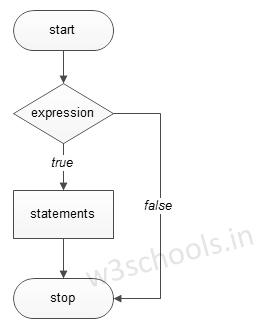C++ conditional statements allow you to make decisions based on the result of a condition. These statements are called Decision Making Statements or Conditional Statements. This tutorial will briefly teach you about the various Decision Making statements in C++.
So far, we have seen that in a C++ program, all the statements are executed sequentially in the order in which they are written and appeared. This occurs when there is no jump-based statement or repetition of specific calculations. But some situations may arise where you may have to change the order of statements' execution depending on particular conditions. It involves a kind of decision making from a set of calculations. It is to be noted that C++ assumes any non-zero or non-null value as true and if 0 (zero) or null treated as false.
This type of structure requires that the programmers indicate several conditions for evaluation within a program. The statements will get executed only if the condition becomes true and optionally, an alternative statement or set of statements will get executed if the condition becomes false.
The flowchart of the Decision-making technique in C++ can be expressed as follows:

C++ languages have such decision-making capabilities within their program by the use of following the decision making statements:
- if Statement
- if-else Statement
- else-if Statement
- goto Statement
- switch Statement
- Conditional Operator
These above decision-making statements are described in more detail in subsequent tutorials.